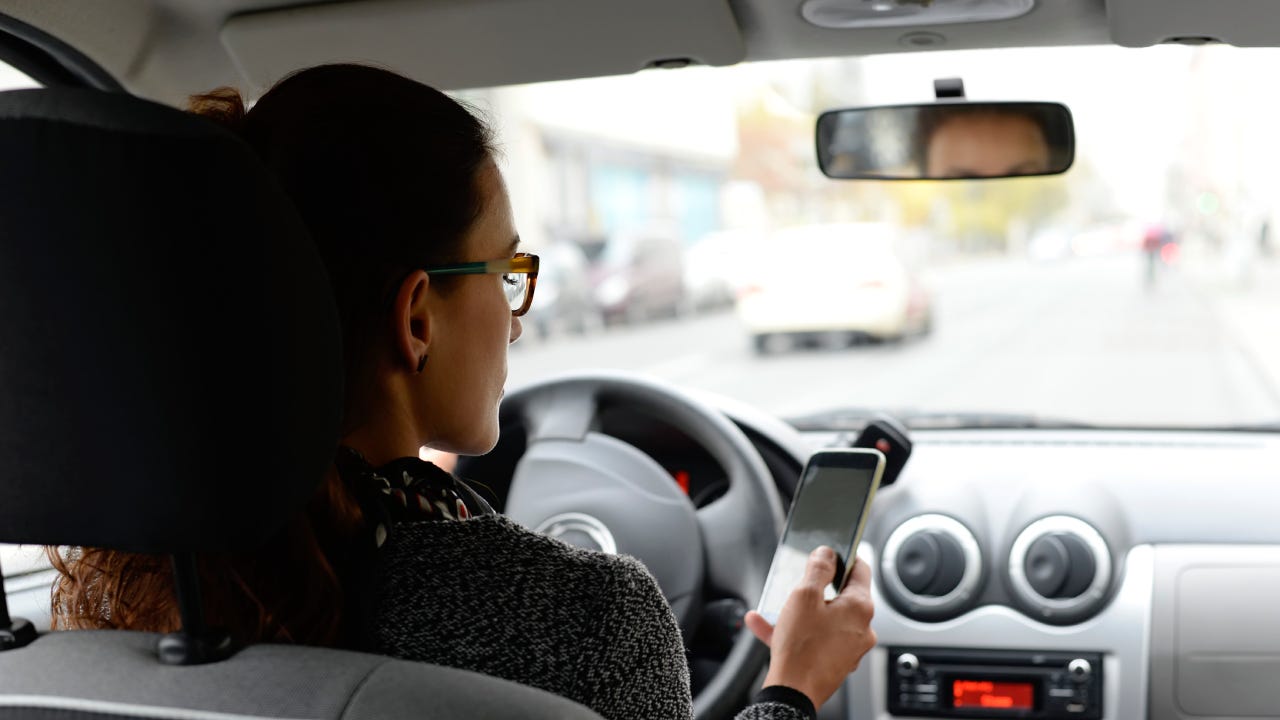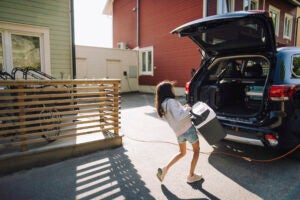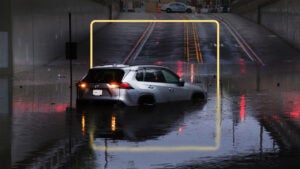100 days of dangerous driving end on Labor Day — but is the worst yet to come?



The road ahead seems busier than ever. With over 3 trillion miles driven in 2023, Americans are back behind the wheel in record numbers. Whether it’s the daily commute, road trips or holiday travel, more drivers on the road mean more opportunities for distraction — and danger. From phones buzzing to GPS updates, the countless distractions we face while driving can quickly lead to life-threatening situations.
Historically, summer holidays like Memorial Day and Labor Day see a spike in crashes, particularly among younger drivers. Unfortunately, the end of summer does not relieve risky driving statistics. Holidays like Thanksgiving, Christmas and New Year’s Eve will be here before you know it and present their own risks with increased traffic, celebrations and distractions.
While the open road offers freedom, it also demands focus. Understanding when and why these hazards are most prevalent is crucial to keeping yourself and others safe. Let’s take a closer look at why these days are especially risky and how you can navigate them more safely.
The 100 deadliest days of summer
As the calendar inches closer to Labor Day, the tail end of summer brings more than just beach trips and barbecues. It also marks the conclusion of what has been dubbed the “100 deadliest days of summer” — a period notorious for heightened risks on the road. Spanning from Memorial Day to Labor Day, this stretch can be dangerous for drivers, with more vehicles on the road, longer daylight hours and a surge in vacations leading to a spike in crashes.
However, even as the 100 deadliest days wind down, the risks don’t simply fade away. Labor Day weekend is a high-risk period for accidents, frequently ranking among the most hazardous days to be on the road. But it’s not just about summer ending — the upcoming winter holidays bring their own challenges. These events are notorious for distracted driving, higher alcohol consumption and heavier traffic, making the coming months just as dangerous as summer’s peak. Here are a few statistics to highlight just how dangerous the roads can become over holiday weekends.
- In 2023, an estimated 40,990 people died in car accidents. (NHSTA)
- In May 2022, 12.5 percent of all car crashes occurred on Memorial Day. (NSC)
- 89 Texans were killed every month in 2023 due to drunk driving, with July and August being highlighted as the two deadliest months. (TxDOT)
- An estimated 375 people died on U.S. roads this past New Year’s Day in 2024. (NSC)
- The National Safety Council projected that 599 people would lose their lives on the road during the Independence Day holiday in 2024. (NSC)
- In 2023, an estimated 455 people were expected to die in traffic accidents over the Labor Day weekend. (NSC)
- For Thanksgiving and Christmas of 2023, it was projected that 507 and 345 people would be killed on U.S. roads, respectively. (NSC)
The most distracted driving holidays
As summer winds down, the risks of distracted driving are far from over. In fact, the holidays that follow — Thanksgiving, Christmas and New Year’s Eve — are some of the most dangerous days to be on the road. These celebrations bring an unfortunate mix of packed schedules, travel stress and distractions that can quickly turn a joyous occasion into a tragic one. Not to mention the often hazardous road conditions that accompany this holiday season, depending on the state you’re traveling through.
Overall, increases in distracted driving on these 12 holidays for the past four years have been responsible for over 11,800 crashes, 6,600 injuries, 50 fatalities and $468 million in economic damages.
— The State of U.S. Road Risk in 2024, Cambridge Mobile Telematics
It’s easy to overlook the dangers of distracted driving, especially during holidays when celebrations and travel plans take center stage. However, the statistics paint a sobering picture of just how costly those distractions can be. From increased screen time while driving to more accidents, injuries and even fatalities, these high-risk days affect not only the lives of those involved but also create a ripple effect of economic damage that impacts us all.
Below, we’ll break down the 12 holidays when distracted driving surges, showing the direct correlation between these moments of inattention and their devastating consequences. Understanding the data isn’t just about being informed; it’s about being prepared to drive safely during these critical times.
The economic damage associated with these crashes includes not only property damage and medical costs but also lost productivity and wage losses. For example, the total economic impact of car accidents in the U.S. annually is estimated at $242 billion, with $99 billion attributed to medical care and productivity losses. The average accident claim involves over $15,000 in bodily injury expenses and more than $3,000 in property damage claims.
When crashes spike during high-risk times, it can also lead to higher average car insurance premiums for everyone. More accidents generally equate to a rise in claim frequency, pushing insurers to adjust rates to cover these costs. While economic losses can be measured, the emotional toll and human lives lost are incalculable, making it very important to remain focused and responsible when behind the wheel.
Common causes of distracted driving
Understanding the dangers of distracted driving is just the beginning. Identifying the common causes helps highlight how easily attention can shift away from the road and how devastating the consequences can be. Here are some common causes of distracted driving that you may or may not be aware of:
- Cell phone use: Texting, calling or interacting with apps is one of the leading distractions for drivers.
- Eating and drinking: Grabbing a quick bite or sipping coffee while driving often results in taking hands off the wheel and eyes off the road.
- Talking to passengers: Engaging in deep conversations or dealing with kids in the backseat can divert focus.
- Using in-car technologies: Adjusting the GPS, changing the music or fiddling with controls can easily pull attention away from driving.
- Daydreaming: Mental distractions, like letting your mind wander or zoning out, are a significant but often overlooked cause.
- Grooming: Activities like putting on makeup or fixing hair while driving are common but highly dangerous distractions.
States with hands-free laws are taking proactive steps to reduce these risks. Cambridge Mobile Telematic’s (CMT) 2024 Road Safety Report highlighted that 29 states have implemented hands-free laws that make it illegal to handle a phone while driving in any capacity. These states typically experience lower rates of distracted driving, accidents and fatalities. For example, in 2023, states with hands-free laws averaged 1 minute and 35 seconds of phone motion distraction per hour, compared to 1 minute and 44 seconds in states without such laws. An improvement of any kind, even a mere 9 seconds, can save lives.
Ohio, Alabama, Michigan and Missouri were the first states to implement hands-free laws. After their laws began, these states averaged a phone motion reduction of 7.1 percent. Based on crash statistics from NHTSA in its 2023 report, CMT estimates that hands-free laws prevented 8,200 crashes, 4,600 injuries, 37 fatalities and $325 million in economic damage.
Interestingly, rural states, which often lack comprehensive hands-free laws, show higher rates of distracted driving. In fact, phone motion distraction was 15.3 percent higher in most rural states compared to urban ones. This disparity suggests that fewer drivers and open roads can give a false sense of security, leading to more risky behavior behind the wheel.
As more states consider adopting hands-free laws, the hope is that stricter regulations can curb dangerous habits and ultimately save lives.
Ways to make driving safer
While understanding the risks of distracted driving is critical, taking proactive steps to make driving safer is just as important. Whether you’re planning a holiday road trip or navigating everyday traffic, there are simple actions you can take to protect yourself and others.
- Limit distractions: Keep your phone out of reach or use hands-free options if you need to take a call. Avoid activities like eating, adjusting the GPS or grooming while driving.
- Plan ahead: Before starting your trip, set your destination in your GPS, choose your playlist and take care of anything else that could distract you while driving.
- Stay focused: Practice defensive driving by keeping your eyes on the road, scanning for potential hazards and maintaining a safe distance from other vehicles.
- Avoid driving under the influence: Plan for a designated driver or use a rideshare service if you’ll be drinking. Even small amounts of alcohol can impair your reaction time and judgment.
- Adjust for conditions: Slow down and increase following distance in bad weather, heavy traffic or poor visibility conditions.
In addition to these tips, telematics programs are increasingly becoming a valuable tool for encouraging safer driving habits. Telematics programs, offered by nearly all major auto insurers, use technology to monitor driving behaviors such as speed, braking and phone use. These programs not only provide real-time feedback to help drivers improve, but they can also offer significant savings.
According to the U.S. Road Safety Report, drivers who enroll in usage-based insurance (UBI) programs can receive discounts of 10 percent to 15 percent upfront, with potential savings of up to 50 percent at renewal for consistently safe driving. The growing adoption of telematics programs, which saw a 142 percent increase in users from 2020 to 2023, highlights their effectiveness in reducing risky driving behaviors.
As telematics becomes more widely available, more drivers are embracing the opportunity to save on premiums while also becoming more mindful on the road. These programs are more than just a way to cut costs, they’re a step toward making our roads safer for everyone.
Safety tips for teens
Teen drivers face some of the highest car insurance rates, largely due to their inexperience and higher likelihood of engaging in distracted driving, speeding or other risky behaviors. In fact, the fatal crash rate for teens ages 16 to 19 is almost three times the rate for drivers 20 years or older.
Insurance providers account for these factors when determining premiums, which is why adding a teen to your policy can result in a significant increase. The table below provides a breakdown of average annual rates, as of June 2024, for teen drivers on their parents’ policy by age and gender. Considering the average cost for full coverage car insurance is $2,311, these numbers are quite staggering.
| Age | Male avg. annual premium | Female avg. annual premium |
|---|---|---|
| 16 | $5,154 | $4,793 |
| 17 | $4,776 | $4,429 |
| 18 | $4,446 | $4,113 |
| 19 | $3,898 | $3,580 |
Safety tips for parents
As a parent, watching your teen gain the freedom to drive is both exciting and nerve-wracking. While you want them to enjoy the independence that comes with having a license, you also want to ensure they’re making smart decisions behind the wheel, especially during high-risk times like the 100 deadliest days of summer. Your influence as a parent goes beyond just setting rules; it’s about guiding your teen to become a responsible and safe driver. The National Road Safety Foundation gives some practical tips parents might consider:
- Start the conversation early and often: Don’t wait for an incident to discuss road safety. Have honest, ongoing conversations about the dangers of distracted driving, peer pressure and the importance of making smart choices. Highlight the risks they face during this critical period and emphasize how much you care about their safety.
- Lead by example: Your teen is always watching, even when you think they aren’t. Show them what it means to be a safe driver by practicing what you preach. Consistently following the speed limit, staying off your phone and buckling up every time you get in the car sends a stronger message than any words could.
- Consider a refresher course together: Defensive driving techniques have changed since many of us first learned to drive. Enrolling in a course together not only gives you up-to-date knowledge but also shows your teen that learning to be a better driver never stops. It’s a chance to bond and reinforce the importance of road safety in a way that’s practical and impactful.
Parenting through these teenage years comes with its challenges, but being proactive about driving safety can make a real difference. By staying engaged and leading with both guidance and example, you’re not just protecting your teen, you’re helping them build lifelong habits that could save lives, including their own.
Safety tips for seniors
As we age, the desire to remain independent doesn’t fade, especially when it comes to driving. For many seniors, being behind the wheel represents freedom, control and a connection to the community. However, staying safe on the road requires honest self-assessment and adapting to the physical and cognitive changes that naturally come with age. The National Highway Traffic Safety Administration offers some great advice for aging drivers:
- Regular self-assessment: It’s important to recognize changes in your vision, reaction time and physical abilities. If you notice issues like trouble reading road signs, difficulty turning your head to check blind spots or delayed response times, it may be time to adjust your driving habits.
- Vision care: Schedule regular eye exams, especially after age 60, to check for common age-related conditions like cataracts or glaucoma. Keeping your prescription updated and avoiding nighttime driving if glare becomes a problem can make a significant difference.
- Stay physically active: Maintaining strength, flexibility and coordination is key to safely operating a vehicle. Simple exercises like stretching and walking can help improve your ability to handle steering, braking and checking blind spots.
- Refresh your driving skills: Enrolling in a mature driver course can keep you up-to-date on new driving techniques, road signs and traffic laws. These courses often offer helpful strategies for navigating common challenges like busy intersections and high-traffic areas.
- Consider alternative transportation: If driving starts to feel overwhelming, there are other options to explore before giving up your keys completely. Services like ride-shares, senior shuttles and public transportation can help you stay mobile and independent without the stress of driving.
By staying aware of your limitations and making informed decisions, you can continue to enjoy the freedom that driving offers while prioritizing your safety and the safety of others on the road.
The bottom line
Whether it’s a summer road trip or a quick drive to the grocery store during the holiday rush, staying safe behind the wheel comes down to one thing: focus. The road can be unpredictable, and with distractions at an all-time high, even a brief lapse in attention can have lasting consequences. From young drivers just gaining their independence to seniors determined to stay mobile, everyone shares a responsibility to drive with care.
As we’ve seen, certain days and seasons pose more risks than others, but the principles of safe driving remain the same year-round. Be aware, be prepared and most importantly, be focused. The road is more than just a path to get from point A to point B, it’s a shared space where the safety of yourself and others is in your hands. By adopting mindful habits, staying informed and adjusting as needed, you’re not just protecting yourself, you’re helping to create a safer environment for everyone.
Remember, the drive is about more than the destination, it’s about making sure we all get there safely.
Methodology
Bankrate utilizes Quadrant Information Services to analyze the latest rates in June 2024 for ZIP codes and carriers in all 50 states and Washington, D.C. Rates include the most recent approved rate increases filed by insurance companies and are weighted based on the population density in each geographic region so that policyholders can see the impact rates have in their areas. Quoted rates are based on a 40-year-old male and female driver with a clean driving record, good credit and the following full coverage limits:
- $100,000 bodily injury liability per person
- $300,000 bodily injury liability per accident
- $50,000 property damage liability per accident
- $100,000 uninsured motorist bodily injury per person
- $300,000 uninsured motorist bodily injury per accident
- $500 collision deductible
- $500 comprehensive deductible
To determine minimum coverage limits, Bankrate used minimum coverage that meets each state’s requirements. Our base profile drivers own a 2022 Toyota Camry, commute five days a week and drive 12,000 miles annually.
These are sample rates and should only be used for comparative purposes.
Teens: Rates were determined by adding a 16-, 17-, 18- and 19-year-old teen to their 40-year-old married parents’ policy. The rates displayed reflect the total cost of a driver this age added to their parents’ policy.
You may also like

Driving without insurance in Georgia

How does car weight impact auto insurance?


